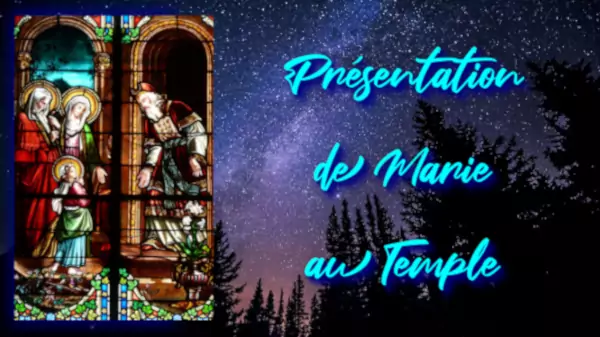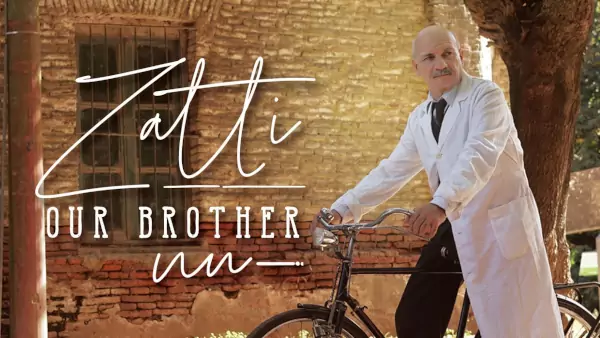November 21 - The four Gospels of the Bible say nothing about the life of the Virgin Mary, but the apocryphal book called Protegospel of James fills this gap. Protévangile means "First Gospel".
This book is said to have been written in Egypt in the second century AD. This book is available in Greek, Syriac, Ethiopian, Georgian and also in the ancient Slavic languages. Saint Justin described this book in the "Dialogue with Triphon and Origen" and cited it as the work of James the Minor. This Protegospel of James, in chapters 6 to 10, tells the story of the Virgin Mary. Joachim and Anne are the parents of Mary. They loved God, and because of their gratitude to Him, they offered Mary to God, before and after her birth. This is how the Gospel of James tells the story:
When Mary was two years old, Joachim said, "Let us take this child to the Temple to fulfill our promise. If not, the Most High will warn us and our sacrifice will be in vain". Anne said: "Let her first be three years old, because then she will grow in wisdom and will know her father and mother". "Well, we will wait," said Joachim. When Mary was three years old, Joachim summoned young girls from the Hebrew people and told them to bring lamps that will not go out. He said the child should not look back. The girls obeyed the order and went up with them to the Temple. The priest took the child, blessed her and said, "Lord, she has glorified Your name from generation to generation. In You, at the end of time, she will reveal the salvation she has accepted for the sons of Israel". He placed the child on the third step of the Temple, and God poured His grace into her. Mary stood at his feet and danced, and the people of Israel loved her. So the parents came down from the Temple, rejoicing and praising God, and the child never looked back. Mary remained in the Temple, like a dove, and was fed by an angel until Joseph asked for her hand.
This is how St. Jerome described Mary's life in the Temple. From dawn until nine o'clock in the morning, she prays. From nine o'clock in the morning until three o'clock in the afternoon, Mary set to work, then she began to pray again until mealtime. Mary was consecrated to the Lord by her parents, but she also gave herself, and she did nothing but fulfill God's will throughout her life.
It is believed that this celebration began in the sixth century, as it appears in the biography of St. John the Silent, by Cyril of Scythopolis, in November. 543, in Jerusalem, the basilica was given the name of St. Mary the New. In Constantinople, the celebration took place as early as the eighth century, a sermon by St. Andrew of Crete attests to this. The Hungarian calendar included this celebration at the beginning of the eighth century, but it was not until 1372 that it was approved by the Holy See. In 1373, Charles V introduced it into the rites of the kings of France and, a year later, he also invited the kingdoms to celebrate the feast. After Gregory XI celebrated the Feast of the Presentation of the Virgin Mary in Rome, the celebration seemed to grow in popularity, adopted by priests, religious congregations and other nations, and was incorporated into the Roman Missal in 1505. However, Pope Pius V removed it from the Missal between 1568 and 1585. Pope Sixtus V restored it to the Roman Church in 1585.
Mary is the model for us in our commitment. Through our baptism, we must also consecrate ourselves to Christ. She is the model for those who have chosen the consecrated life by making vows in response to the call of evangelization. It is the model for priests at the service of Christ and the Church. Therefore, let us be guided by her benevolence and implore her intercession because she is the Almighty Mother.








